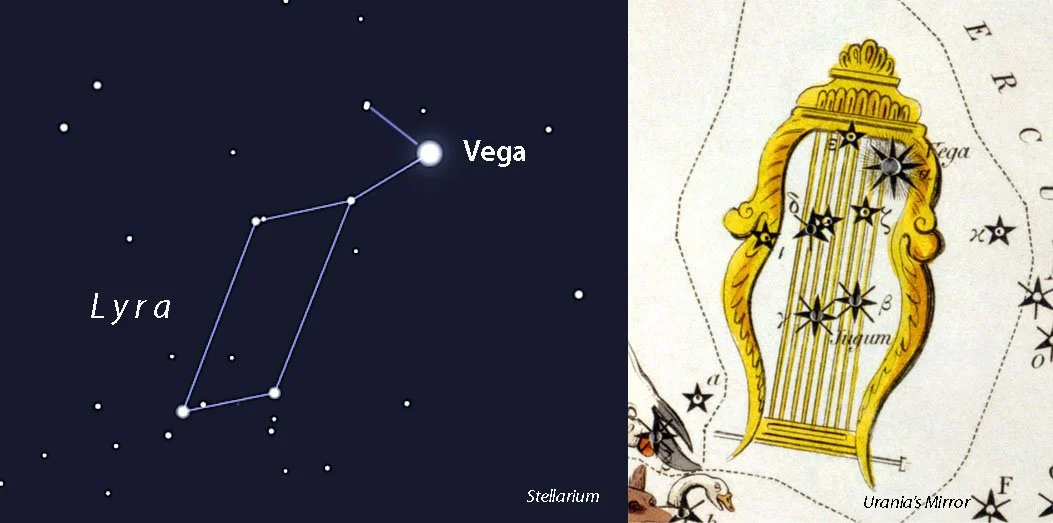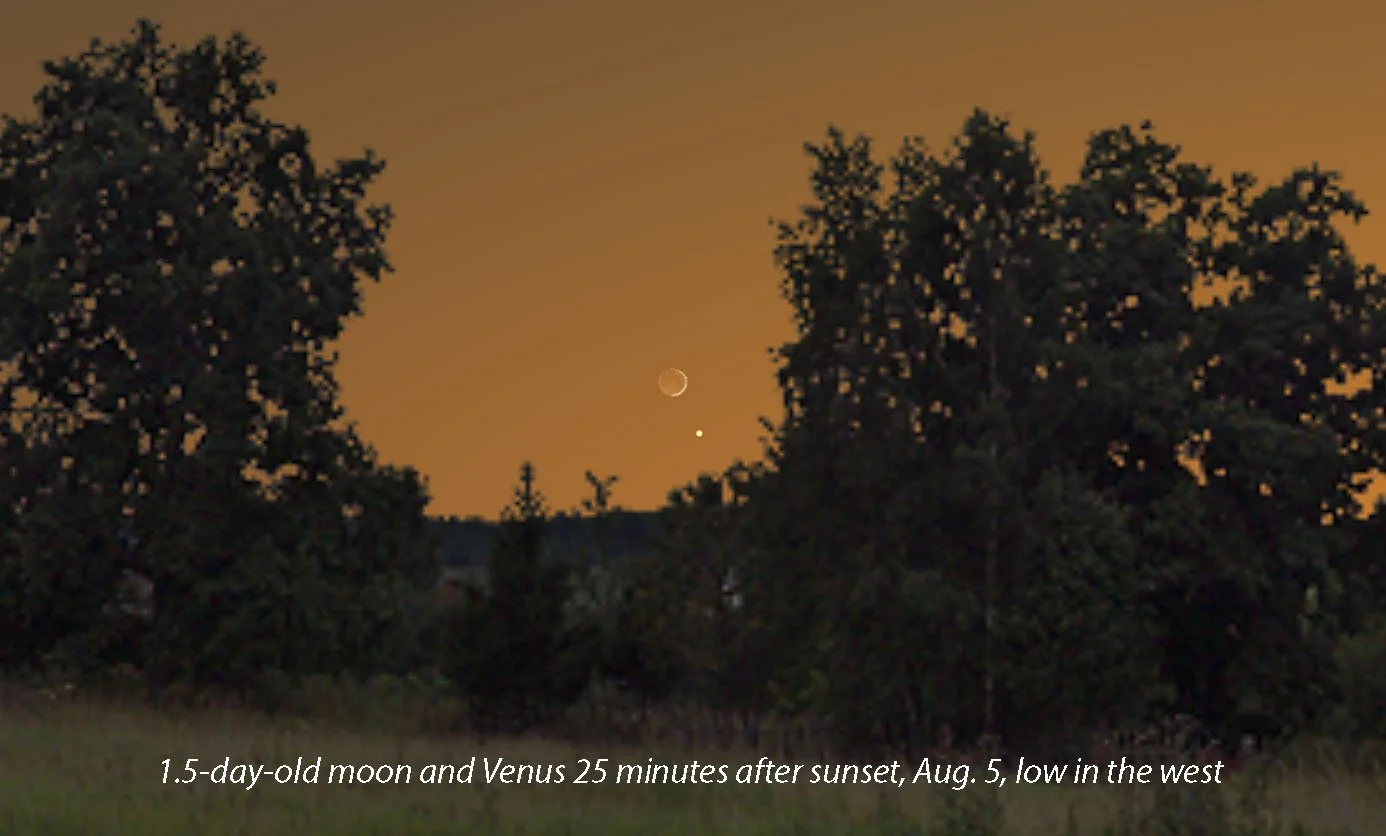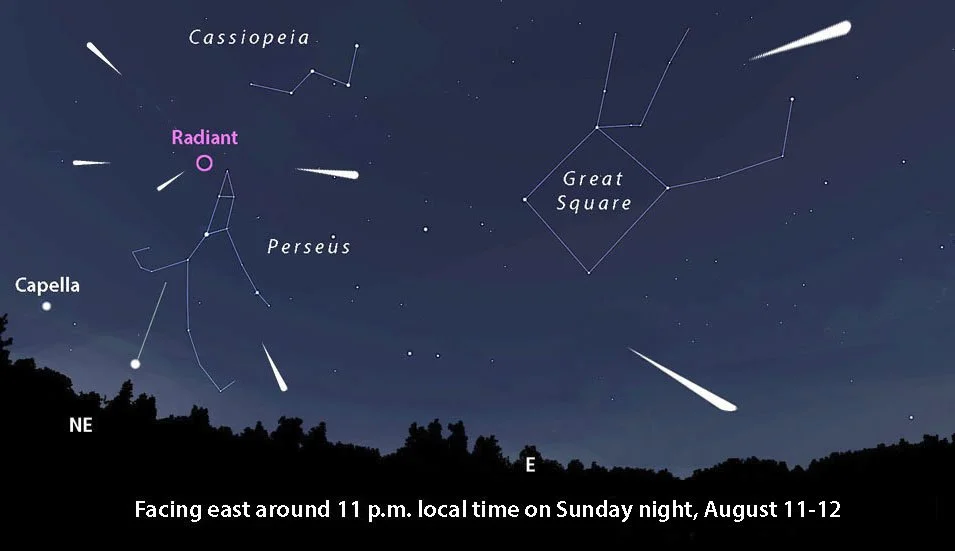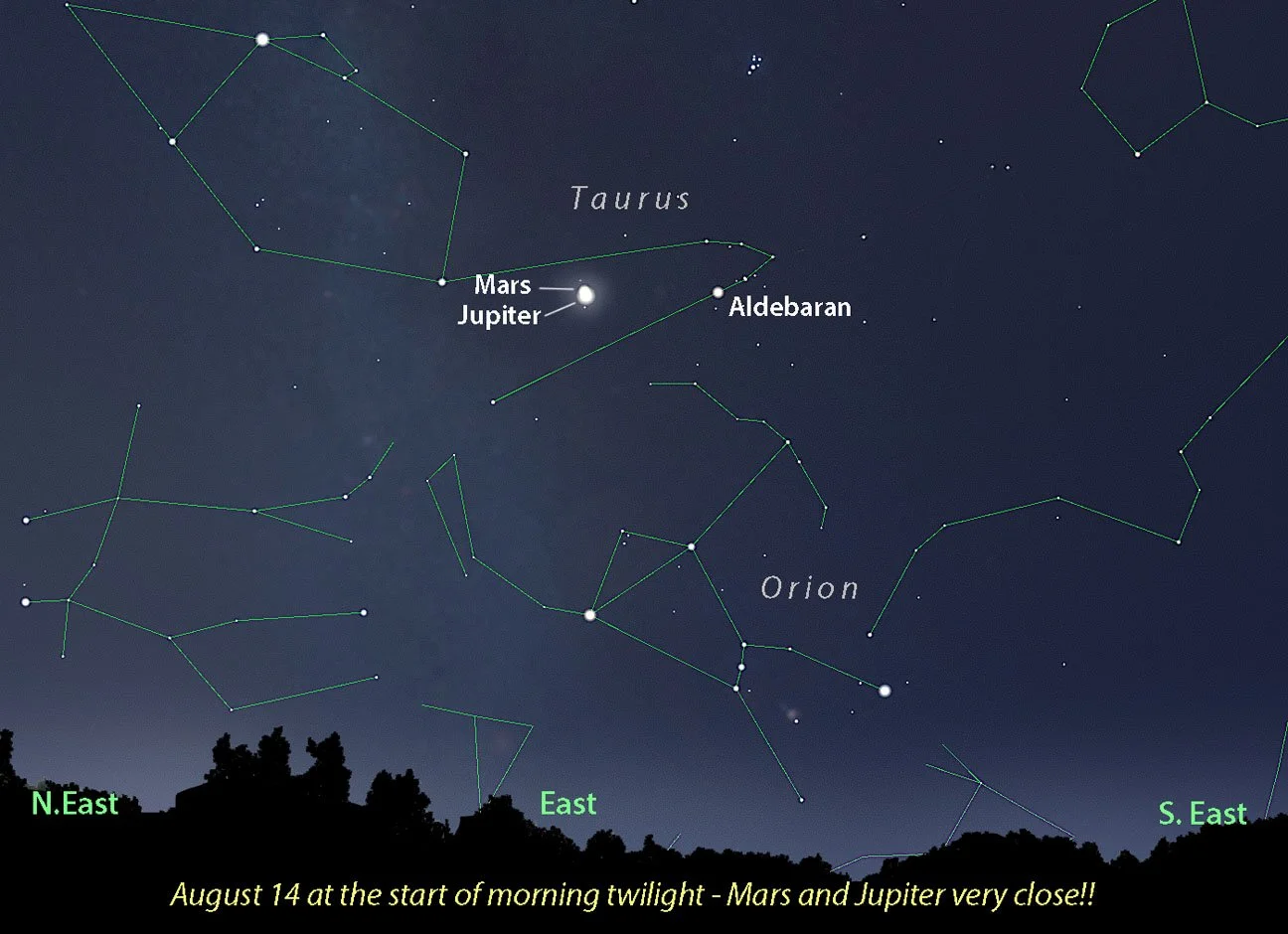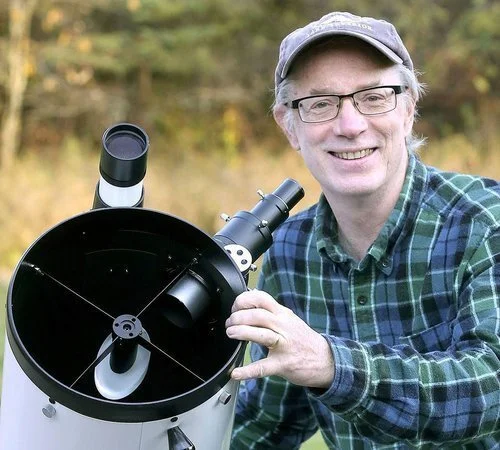August 2024 Night Sky Calendar
While August can be stubbornly hot, nights are becoming noticeably longer. Instead of waiting until after 10:30 or 11 p.m. for darkness to arrive, the stars are out by 10 or even a bit earlier. This is good news for skywatchers who enjoy a good sleep as much as the next person.
Highlights of the month include several squeaky-close moon-planet conjunctions and one of the richest meteor showers of the year, the Perseids. The moon will be near first quarter phase (half-moon) during the shower’s peak on Sunday night, August 11-12, and have little impact on the number of meteors visible. Under pristine, moonless skies, up to 100 per hour might be seen at maximum; from moderately light polluted suburban sites, expect closer to 30-40 meteors per hour.
Our featured constellation this month is Lyra. Connect the figure’s half- dozen “dots” and you’ll (hopefully) see a lyre, a hand-held string instrument resembling a harp that was popular in ancient Greece. To find it, just look straight up around 10 p.m. local time. Vega, the group’s brightest star, shines almost directly overhead.
Vega — pronounced VEE-guh or VAY-guh — gleams with a pure white radiance. Located just 25 light-years away, it’s the fifth brightest nighttime star. Were this luminary to replace the sun we’d be roasted alive — it’s about 2.5 times its size and 40 times as bright. Five additional fainter stars near Vega outline the lyre. If you happened to see the movie “Contact,” based on Carl Sagan’s novel of the same name, Vega was the source of the alien message sent to Earth.
Venus finally makes its appearance in the evening sky though it remains quite low. You’ll need binoculars for the best view. Saturn’s up in the southeastern sky high enough to see around 11 p.m. local time. Mars and Jupiter draw close together in the morning sky in Taurus the bull.
Download the free Stellarium Mobile app for Android and iPhone to help you find and identify the planets and constellations. Do a Google search then install the app, set it in night mode (red screen) and point your phone skyward. For a free August sky map and calendar go to www.skymaps.com/downloads.html
Events (a.m. indicates the event happens in the early morning sky):
August 4 – New Moon
August 5 – Use binoculars to hunt for the 1.5-day-old moon very low in the western sky starting about 20 minutes after sunset. It includes a pleasant surprise — Venus! The planet will appear less than one degree below the thin crescent. Both will easily fit in the same field of view.
August 11-12 – Height of the annual Perseid meteor shower. Dozens of meteors will be visible from a dark sky especially in the early morning hours of the 12th. You’ll still see a modest number as early as 10 p.m. local time. Face your reclining chair in the darkest direction, then watch and wait. Perseids can appear anywhere in the sky but all point back to the “radiant” located in Perseus in the northeastern sky. The shower is known for its fast meteors and plentiful fireballs. In case of bad weather, the following night will also be good for viewing.
August 12 – First quarter moon. Shines in the southern sky at sunset and sets between 11-11:30 p.m. local time.
August 13 – Waxing gibbous moon shines just to the right of Antares, the brightest star in Scorpius the scorpion.
August 14 (a.m.) – Spectacular, close conjunction of Mars and Jupiter in the east at the start of dawn. The two planets will pair up less than one full-moon-diameter apart, equal to just 0.3 degrees. Get your phone cameras ready! If clouds interfere, the they’ll be nearly as close on the mornings before and after.
August 19 – Full Sturgeon Moon, named for the fish caught in large numbers in the Great Lakes this time of year. Check your local moonrise time at timeanddate.com/moon so you can be there to watch its grand appearance at the eastern horizon.
August 20 – Another close conjunction, this time between the waning gibbous moon and Saturn. The two will be less than one full-moon-diameter (0.5 degrees) apart. Best shortly after moonrise through binoculars.
August 26 (a.m.) – Last quarter moon. Rises around midnight and stands approximately due south at sunrise. Bonus! It shines just a short distance below and left of the dipper-shaped Pleiades star cluster. Both will fit in the same binocular field of view for a stunning sight.
August 27 (a.m.) – Crescent moon in conjunction with brilliant Jupiter before dawn in the eastern sky. Mars will also be in the neighborhood, shining red-orange below and left of the moon.
Bob King is an amateur astronomer, author, and passionate educator. He served as a photographer and photo editor at the Duluth News Tribune for 39 years and taught at the UMD planetarium. Bob’s work had a great impact on Voyageurs National Park. To achieve International Dark Sky Park certification, the park was required to host dark sky education events. Through the Night Sky Explorer webinars, the Conservancy was able to fulfill this component and help secure the certification for Voyageurs National Park. We can’t thank Bob King enough for sharing his talents and knowledge with the Conservancy community to support dark sky preservation.


